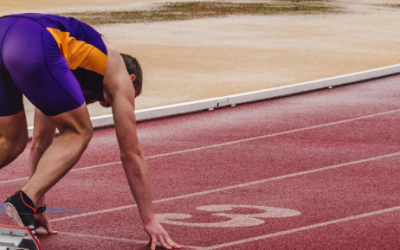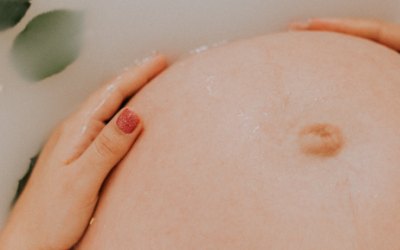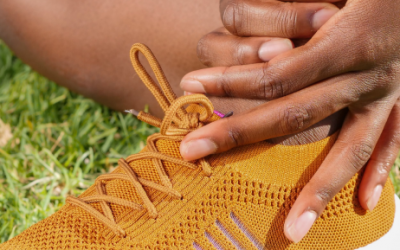In this second part different treatment modalities will be discussed for each tendon pathology.
Tendonitis treatment approach:
The most prominent treatment goal for tendinitis is to reduce inflammation. Inflammation from acute tendonitis often responds quickly to anti-inflammatory medications (NSAID’s) and the PRICE* guidelines (1). Activities that re-create the symptoms should be avoided until pain settles. A comprehensive rehabilitation programme must also be commenced so the athlete can return back to full activity.

- -P-Protection
- -R-Rest
- -I- Ice
- -C-Compression
- -E- Elevation
Tendinopathy treatment approach:
Inflammation isn’t present in tendinopathy and tendinosis. In fact, some treatments that reduce inflammation are contraindicated with tendinosis (2). These tendinopathies, therefore, do not respond well to anti-inflammatory treatments and are best treated with functional rehabilitation (31). Rehabilitation aims to strengthen the muscles and tendons involved, as well as to address any biomechanical deficits. Also, re-evaluation of training load is a fundamental component when dealing with tendinopathies.

1. Reactive tendinopathy/early tendon dysrepair: At this stage, load management (reduction) will generally allow the tendon time to adapt and cells to become less reactive. Also, a tendon with reduced load is likely to have less pain associated and allowing a day or two between high or very high tendon loads will facilitate the process (3). Assessment and modification of the intensity, duration, frequency and type of load is the key clinical intervention. This may also include identifying the potential for biomechanical overload (4).
Tendon load without energy storage and release, such as cycling or strength-based weight training, can be maintained, as this is less likely to induce further tendon response. Conversely, high load elastic or eccentric loading, particularly with little recovery time (eg, on successive days), will tend to aggravate tendons in this stage.
Non-steroidal anti-inflammatory medications (NSAIDs) have been reported to interfere with soft tissue healing in a range of tissues. Although pain may be reduced, they have a negative effect on tendon repair and are best avoided (2, 5-8).
2. Late tendon dysrepair/degenerative tendinopathy
At this stage, treatment should aim to stimulate cellular activity, increase protein production (collagen or ground substances) and restructure the matrix.
Exercise, particularly eccentric loading, has been shown to improve tendon structure (9) and manage pain (10-11) both in the short (12) and long term (13), allowing better function and return to activity.
Other modalities such as Shock Wave Therapy, Ultrasound and Friction were found clinically less effective in reducing pain than exercise (14,15,16). Pharmacological agents such as Prolotherapy (including blood), aprotinin, sclerosing therapy and glyceryl trinitrate have show variable inconsistent results (17-29). Surgery is only considered when patients have failed conservative interventions.
Tendinosis:
Treatment goals for tendinosis are similar to those of degenerative tendinopathy and aim to break the cycle of injury; optimizing collagen production and maturation so that the tendon regains normal tensile strength is key(30).
If you are having tendon symptoms professional assessment is advised in order to direct you towards the most effective treatment and identify factors that may predispose the current state of your tendon
See also:
Part I: Tendonitis vs Tendinopathy – The difference!
Part III: Taking care of your tendons
Running Related Injuries (RRI’s)
Ankle Injuries
References
http://emedicine.medscape.com/article/809692-treatment
Tsai WC, Tang FT, Hsu CC, et al. Ibuprofen inhibition of tendon cell proliferation and upregulation of the cyclin kinase inhibitor p21CIP1. J Orthopedic Resear. 200422(3):586–591.
Cook JL, Purdam CR. Is tendon pathology a continuum? A pathology model to explain the clinical presentation of load-induced tendinopathy. Br J Sports Med.2009 Jun;43(6):409-16.
Langberg H, Skovgaard D, Petersen LJ, et al. Type I collagen synthesis and degradation in peritendinous tissue after exercise determined by microdialysis in humans. J Physiol 1999;521:299–306.
Ferry ST, Dahners LE, Afshari HM, et al. The effects of common anti-inflammatory drugs on the healing rat patellar tendon. Am J Sports Med 2007;35:1326–33.
Riley GP, Cox M, Harrall RL, et al. Inhibition of tendon cell proliferation and matrix glycosaminoglycan synthesis by non-steroidal anti-inflammatory drugs in vitro. J Hand Surg Br 2001;26B:224–8.
Tsai WC, Tang FT, Hsu CC, et al. Ibuprofen inhibition of tendon cell proliferation and upregulation of the cyclin kinase inhibitor p21CIP1. J Orthop Res 2004;22:586–91.
Tsai WC, Hsu CC, Chou SW, et al. Effects of celecoxib on migration, proliferation and collagen expression of tendon cells. Connect Tissue Res 2007;48:46–51.
Langberg H, Ellingsgaard H, Madsen T, et al. Eccentric rehabilitation exercise increases peritendinous type I collagen synthesis in humans with Achilles tendinosis. Scand J Med Sci Sports 2007;17:61–6.
Roos EM, Engstrom M, Lagerquist A, et al. Clinical improvement after 6 weeks of eccentric exercise in patients with mid-portion Achilles tendinopathy — a randomized trial with 1-year follow-up. Scand J Med Sci Sports 2004;14:286–95.
Woodley BL, Newsham-West RJ, Baxter GD, et al. Chronic tendinopathy: effectiveness of eccentric exercise. Br J Sports Med 2007;41:188–98.
Shalabi A, Kristoffersen-Wilberg M, Svensson L, et al. Eccentric training of the gastrocnemius-soleus complex in chronic Achilles tendinopathy results in decreased tendon volume and intratendinous signal as evaluated by MRI. Am J Sports Med 2004;32:1286–96
Ohberg L, Lorentzon R, Alfredson H. Eccentric training in patients with chronic Achilles tendinosis: normalised tendon structure and decreased thickness at follow up. Br J Sports Med 2004;38:8–11.
Stasinopoulos D, Stasinopoulos I. Comparison of effects of exercise programme, pulsed ultrasound and transverse friction in the treatment of patellar tendinopathy. Clin Rehabil 2004;18:347–52.
Maier M, Milz S, Wirtz DC, et al. [Basic research of applying extracorporeal shockwaves on the musculoskeletal system. An assessment of current status]. Der Orthopade 2002;31:667–77
Warden S. Low-intensity pulsed ultrasound for chronic patellar tendinopathy: a randomised, double-blind, placebo-controlled trial. Rheumatology. In press.
Anitua E, Andı´a I, Sanchez M, et al. Autologous preparations rich in growth factors promote proliferation and induce VEGF and HGF production by human tendon cells in culture. J Orthop Res 2005;23:281–6.
Suresh SP, Ali KE, Jones H, et al. Medial epicondylitis: is ultrasound guided autologous blood injection an effective treatment? Br J Sports Med 2006;40:935–9.
Shalabi A, Svensson L, Kristoffersen-Wiberg M, et al. Tendon injury and repair after core biopsies in chronic Achilles tendinosis evaluated by serial magnetic resonance imaging. Br J Sports Med 2004;38:606–12.
Zeisig E, Fahlstro¨m M, O¨hberg L, et al. Pain relief after intratendinous injections in patients with tennis elbow: results of a randomised study. Br J Sports Med 2008;42:267–71.
Brown R, Orchard J, Kinchington M, et al. Aprotinin in the management of Achilles tendinopathy: a randomised controlled trial. Br J Sports Med 2006;40:275–9.
Capasso G, Testa V, Maffulli N, et al. Aprotinin, corticosteroids and normosaline in the management of patellar tendinopathy in athletes: a prospective randomized study. Sports Exercise and Injury 1997;3:111–15.
Lind B, O¨hberg L, Alfredson H. Sclerosing polidocanol injections in mid-portion Achilles tendinosis: remaining good clinical results and decreased tendon thickness at 2-year follow-up. 2006;14:1327–32.
Hoksrud A, Ohberg L, Alfredson H, et al. Ultrasound-guided sclerosis of neovessels in painful chronic patellar tendinopathy: a randomized controlled trial. Am J Sports Med 2006;34:1738–46.
Alfredson HK, Ohberg L. Increased intratendinous vascularity in the early period after sclerosing injection treatment in Achilles tendinosis : a healing response? Knee Surg Sports Traumatol Arthrosc 2006;14:399–401.
Paoloni J, Appleyard R, Nelson J, et al. Topical glyceryl trinitrate treatment of chronic noninsertional Achilles tendinopathy. J Bone Joint Surg Am 2004;86-A:916– 21.
Paoloni JA, Appleyard RC, Nelson J, et al. Topical nitric oxide application in the treatment of chronic extensor tendinosis at the elbow. Am J Sports Med 2003;31:915–20.
Paoloni JA, Appleyard RC, Nelson J, et al. Topical glyceryl trinitrate application in the treatment of chronic supraspinatus tendinopathy: a randomized, double-blinded, placebo-controlled clinical trial. Am J Sports Med 2005;33:806–13.
Kane TP, Ismail M, Calder JD. Topical glyceryl trinitrate and noninsertional Achilles tendinopathy: a clinical and cellular investigation. Am J Sports Med 2008;36:1160–3
Khan KM, Cook JL, Taunton JE, et al. Overuse tendinosis, not tendinitis—Part 1: A new paradigm for a difficult clinical problem. Physiciansportsmed. 2000 28(5)
Rutland M, O’Connell D, et al. Evidence-supported rehabilitation of patellar tendinopathy. N Am J Sports Phys Ther. 2010 Sep; 5(3): 166–178.



